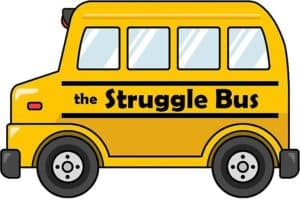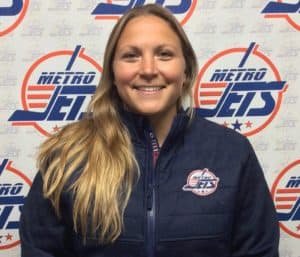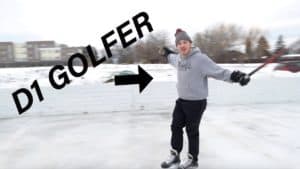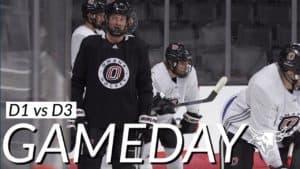So, this is how it goes almost every summer…
I have a teenager who I’ve either coached, or know via a colleague, who ends up contacting me in July or August asking how I can get him on a Junior hockey team. It’s almost always the same story: Some AAA coach said he was going to take them, or they were on the bubble, and then that fell through or they’ve followed the old school method of just emailing a couple Tier II coaches and never heard back.
Now their problem is becoming MY problem (and to be fair to these players I have and always will do the best I can to get them placed at an appropriate level). I’m supposed to just pick up the phone, shoot a few texts or drop a tweet and BOOM … they’re moving on.
Unfortunately, I’m not Scott Boras and that’s not how things work.
If I could get in my DeLorean (ask your parents if you don’t know what that is) and go back to the beginning of the previous season I could put down the information below that would save them the hassle and get them on the road for better exposure to Junior hockey clubs, or higher youth clubs in general.
The old saying goes, “The best time to plant a tree was 20 years ago. The second-best time is now.” For hockey players exchange “prepare to get exposure” for “plant a tree” and take out 20 years and put in 6-12 months.
Here are some tried and true methods for you to plant the tree for the next exposure/recruiting season.
Make sure your diet and sleep schedule are the best they can be.
It’s no secret that today’s top athletes are fully mindful of what they are putting into their bodies as fuel and to help rehydrate and regrow muscle. Yes, you maybe young and you can probably eat whatever you want and still perform decent at an athletic level, but why put in regular grade gas when your engine can use premium? Talk with your doctor, or simply google “proper diet for athletes” and there will be a wealth of knowledge and information at your fingertips.
Here’s one I pulled up for you:
Teen Nutrition For Fall Sports
Make sure you are getting an adequate amount of sleep each night. That means turning off Fortnite and silencing your cell phone. Try and aim for 8-9 hours of sleep each night to make sure your entire body and mind get the most amount of rest as possible.
Keep your grades up. Most quality junior programs want players that they will be able to promote to higher levels of juniors and to colleges. While you may or may not find school boring or you are uninterested, keep those grades up so that you become more attractive to said quality clubs. A 3.0 looks a lot better than a 2.0 no matter what you’re doing, and if I’m a coach looking at two equal players for the final spot on my team, I’m going with the kid with the better grades. If you have really poor grades, there will typically be programs still looking for players, but that’s not a good sign and they might not be the best quality teams.
Make sure you are training properly, both on and off the ice. This sounds easy but it’s not always going to be. When practicing with your current team, are you going through the motions at 80 percent or are you going 100 percent every rep of every drill? Are you pushing yourself out of your comfort zone or are you just going with the flow? Are you working on your technique or are you just going with what you got and not trying to improve? One will get you better, the other will kind of keep you stagnant. Every training session whether it’s practice, dryland, or in the gym needs to be 100 percent effort every time. Do you think your technique or skills need to work on the ice? Ask your coach what areas you need to improve on and how you can get there. If they can’t answer that for you, find someone who can or again, google/YouTube the skill or technique you are trying to better yourself in and find that information. Don’t know which weightlifting exercises or the correct form you should be doing (it’s not always the “curls for the girls”)? Again, ask your coach, your PE teacher, or someone who is professionally trained and has knowledge on this subject so you don’t get injured and make actual gains and improvements.
Get video footage of yourself playing. This one is can be done with an iPhone, iPad, GoPro, video camera, or using Livebarn or similar recording equipment a rink may have. Get quality footage of your overall game. Yes, it’s somewhat of a highlight reel, but it doesn’t need to be just all your goals/saves. Maybe it’s footage of you making a good read on the backcheck or breaking up a few plays. Maybe it’s you making the right read on the breakout or in the offensive zone. Sure, get some goals or assists on there or some huge gloves saves, but don’t go overboard. Keep it to 2-3 minutes and have it ready when scouts ask for it, especially if you are going in blind with a team.
Get in front of as many eyes as possible. This is the final and probably most important step of drawing interest into you as a player. If you are not in the top 10 percent who are playing AAA hockey or top-level high school hockey you are going to have to work for that exposure. To players who are looking to move on, I always say, “Get in front of as many eyes as possible.”
Showcase camps are one of your best options to be seen multiple times by numerous pairs of eyes. It can be possibly going to Denver for the CCM Showcase or to Chicago and taking part in the Global Hockey Showcase. This is where scouts and coaches come out and try and find those prospects who are the “unknowns.” Make sure you know when registration opens and get signed up early because they fill up fast, especially for goalies.
More and more leagues are also having their own combines and showcases such as the USPHL, which recently held one in Chicago where the Chicago Blackhawks practice. Teams are grouping up and joining together and holding their own showcase camps, like the one I even got invited to!
If you follow the steps above, and you are willing to research and find the places to get the exposure, there will likely be plenty of opportunities available for you. If you want to just sit around eating Cheetos while playing Xbox, goof off in practice and never try in school, there’s a good chance Junior hockey may not be realistic for you.












